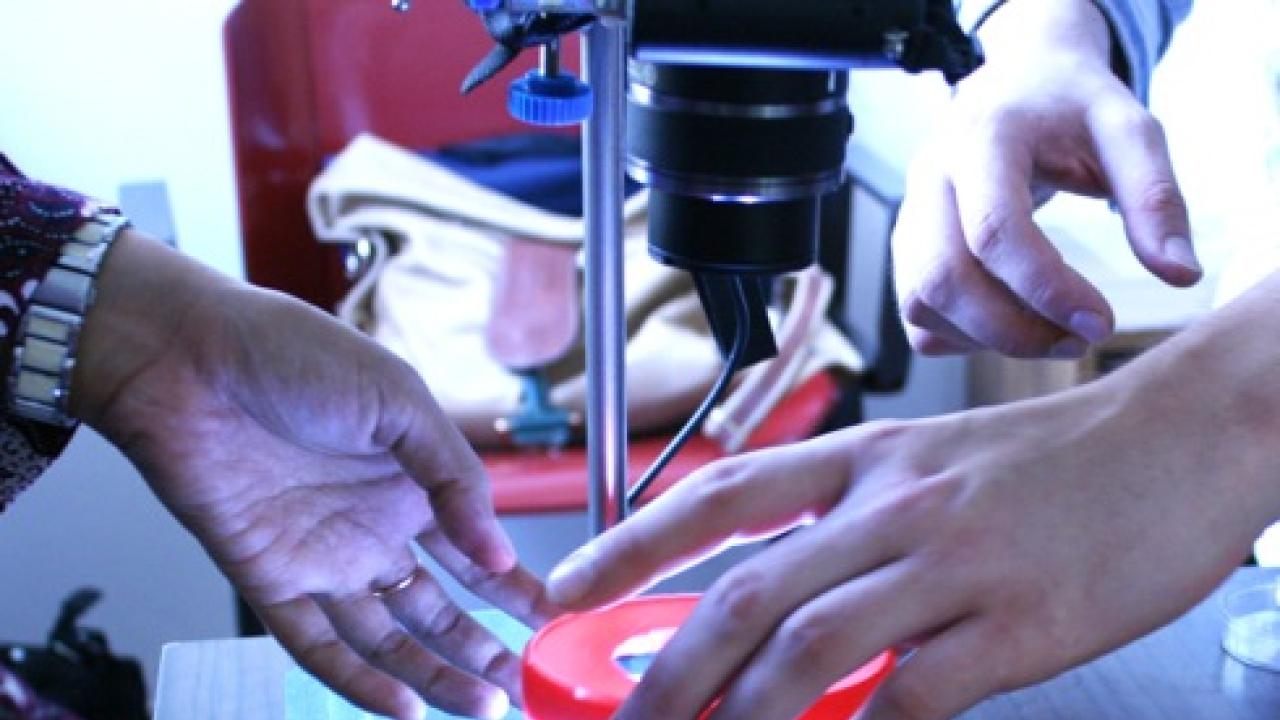
At ICTP's multidisciplinary laboratory, participants are busy working out the intricacies of complex phenomena such as fluid dynamics, cell migration, turbulence, and nonlinear optics. But, they are not using any high-end, expensive equipment for their experiments. Instead, they use simple, inexpensive apparatus for conducting tabletop experiments and understanding complex systems. These 60 participants are at ICTP for the Hands-On Research in Complex Systems School, which runs from 1-12 July 2013.
Eminent scientists who have conducted frontier tabletop research themselves are running this two-week, interactive school with hands-on research involving tabletop experiments. Harry Swinney, director of the Center for Nonlinear Dynamics at the University of Texas, Austin, is one of the school directors and a leading figure in the world of "small science" --science done in a small laboratory with simple equipment.
"These kinds of experiments can be done anywhere in the world," says Swinney. "This is not expensive science and this is not big science, but these experiments help us investigate many phenomena in nature," he explains. Swinney's foray into the world of small science started with tabletop experiments to study systems in thermodynamic equilibrium in the 1960's
Since then, there has been such a tremendous leap in technological advances that the experiments have become more accessible than ever before. "The kind of camera we are using in the lab today costs 60 or 65 Euros; the same camera would have cost tens of thousands of Euros in the 90's. The camera is connected to a laptop computer that is more powerful than the most powerful supercomputer of the 90's," explains Swinney. "This is how things have changed, and it has opened to the entire world the possibility of quantitative study of phenomena that were only possible to the very wealthy labs just 20 years ago."
Rajarshi Roy, director of Institute for Physical Science and Technology at University of Maryland, also one of the school directors says, "The idea behind small science is try to do experiments that cost less than a 1000 Euros, but still do absolutely cutting edge science." Roy points out that getting the school to ICTP has proved to be a great success because the global reach of the Centre meant participants came in from all over the world.
Swinney says he wants participants to take two things from the school. "One, gain ideas on how to address some open questions in nature and technology, and two, gain tools that aid in instrumentation, data analysis, and mathematical modelling." But, most importantly, Swinney wants participants from across disciplines to build collaborations and use small science to address big questions in fields ranging from physics, biology, chemistry and geology to engineering.
















